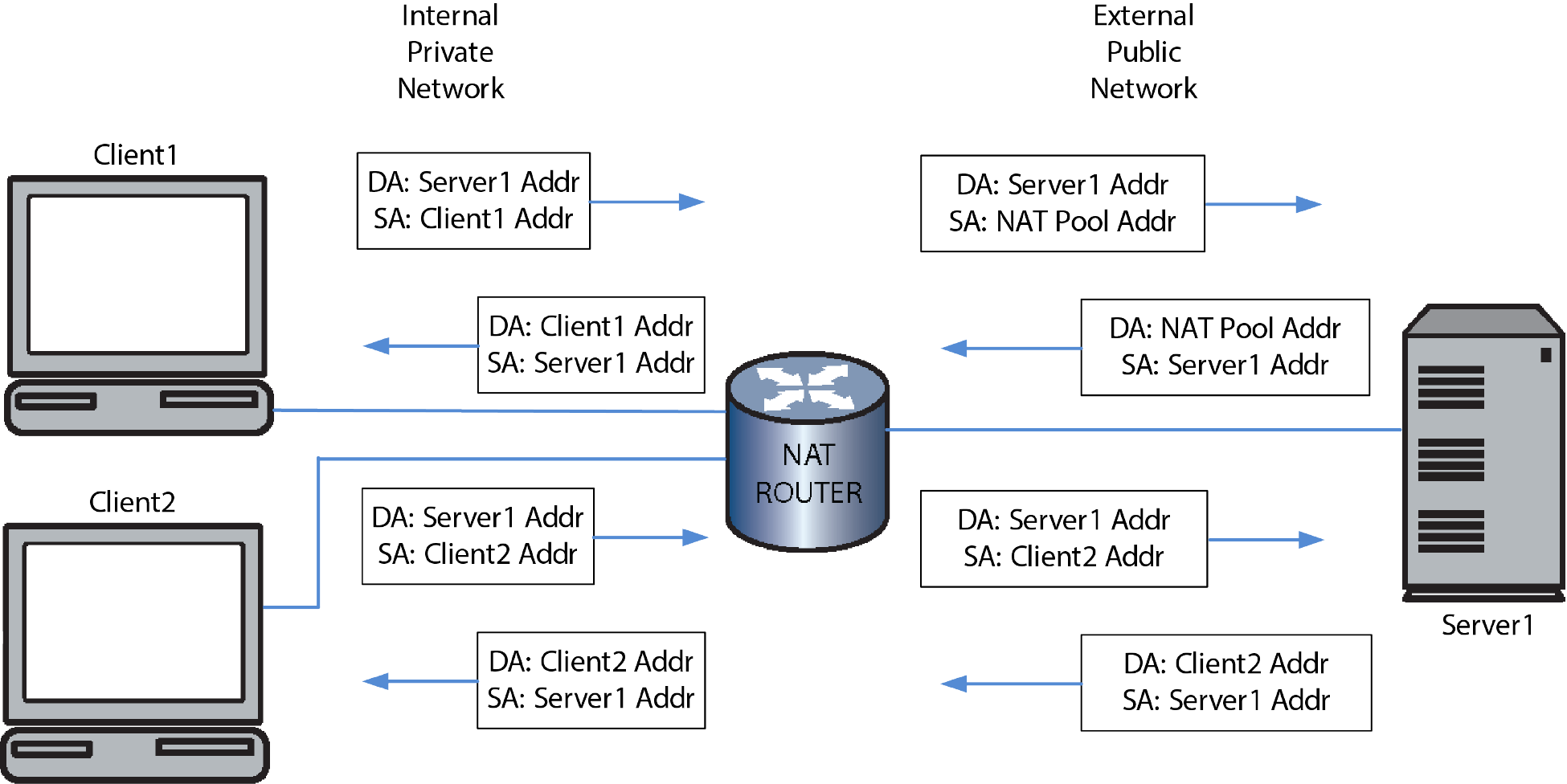Client1 sends an IP packet to Server1 via the NAT router. The packet arrives on a VLAN configured as NAT inside and Server1 is accessible through a VLAN configured as NAT outside.
An access-list matching Client1's source IP address is configured to a NAT source list. A dynamic binding is created and a global IP address from the NAT pool is assigned to the binding. The packet is sent to Server1 with the destination IP unchanged and the source IP address changed to the NAT pool address.
Server1 sends an IP packet back to Client1 using the public NAT pool address as the destination address. This packet matches the previously created dynamic binding. Using the binding to determine the actual destination address, the NAT router sends the packet on to Client1 with the destination IP address changed from the NAT pool address to the Client1 address. The source IP address remains unchanged.


 Print
this page
Print
this page Email this topic
Email this topic Feedback
Feedback